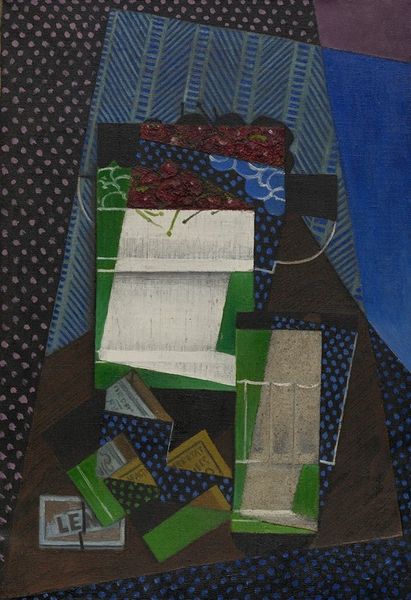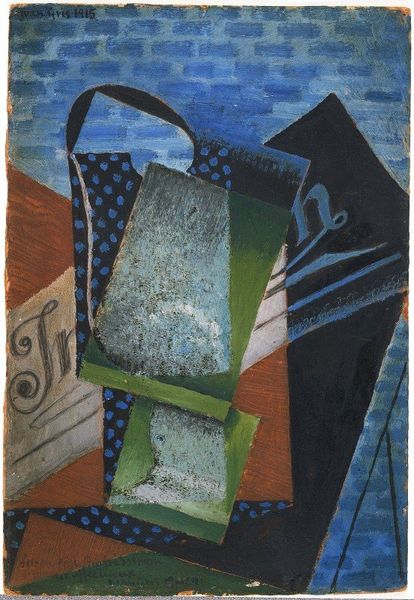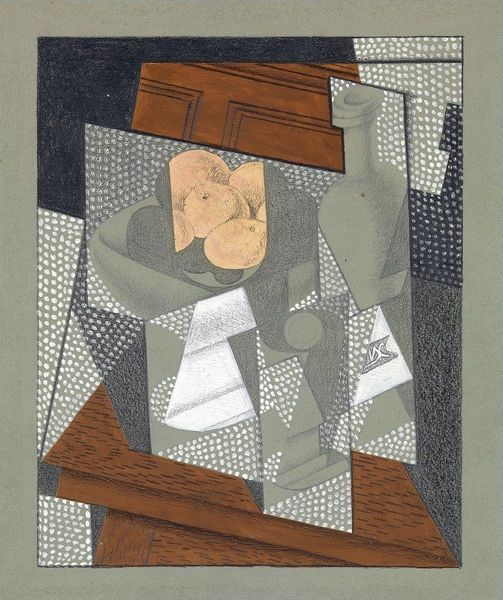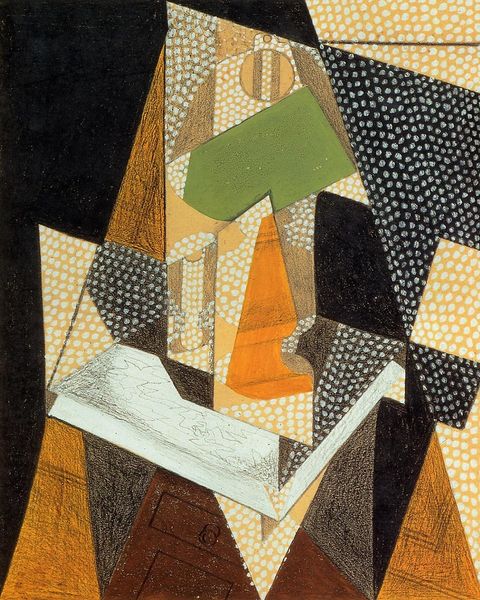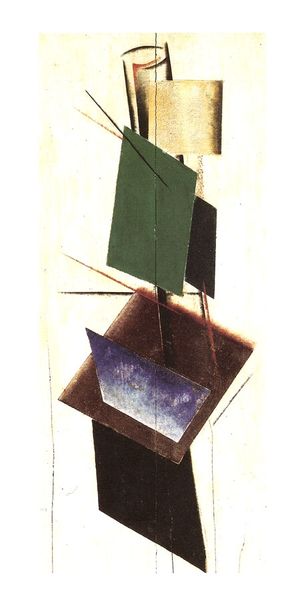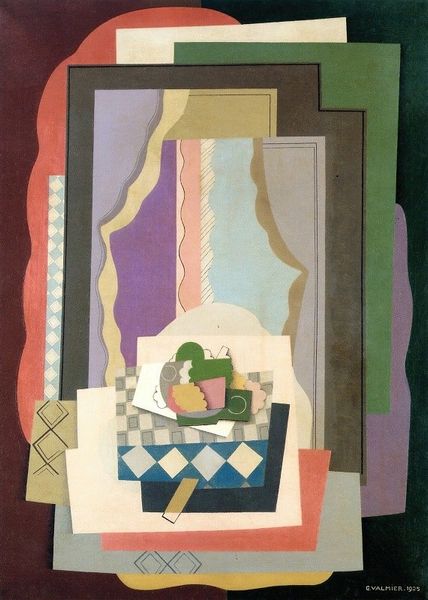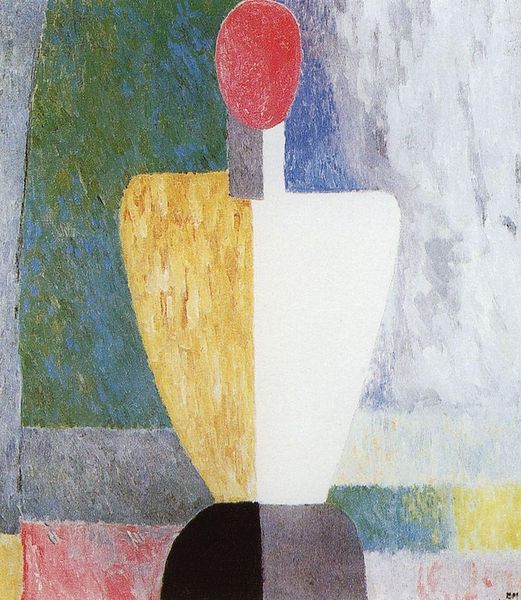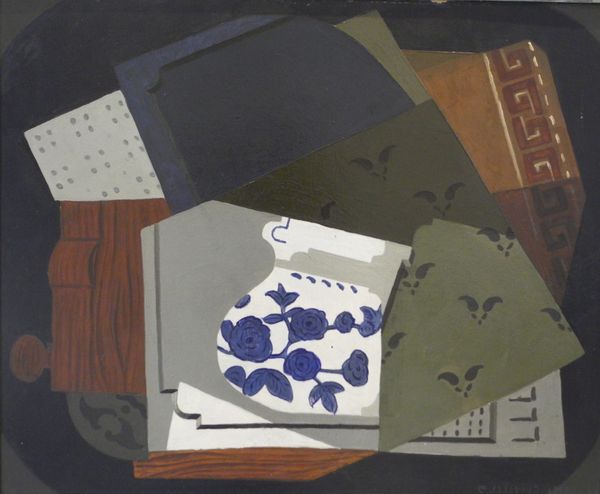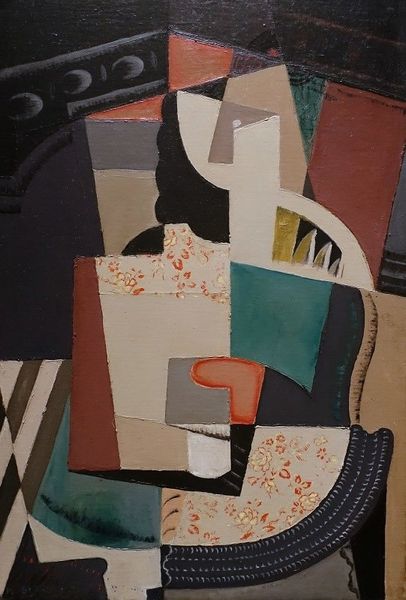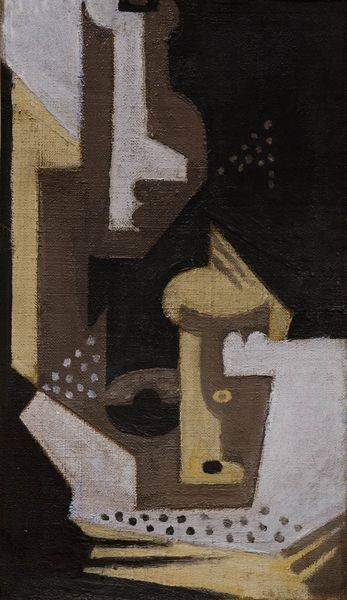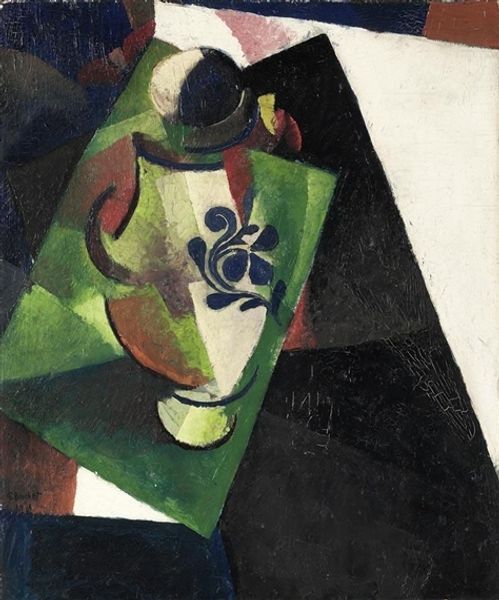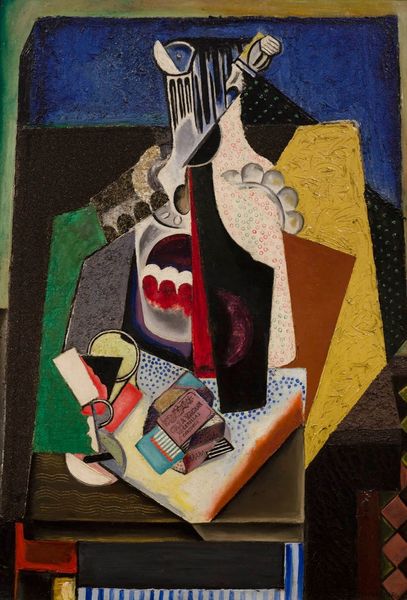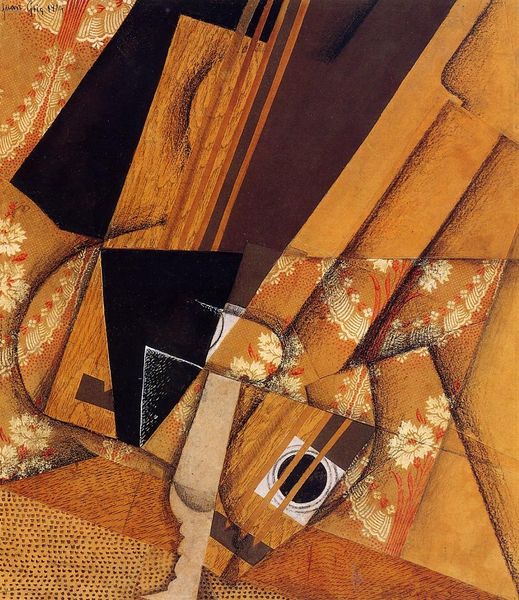
painting, oil-paint
#
cubism
#
painting
#
oil-paint
#
abstract
#
oil painting
#
geometric
Copyright: Public Domain: Artvee
Curator: Looking at "Ace of Clubs and Four of Diamonds," an oil painting crafted by Juan Gris in 1912, the first thing that strikes me is its curious blend of clarity and fragmentation. Editor: It feels intentionally scattered. I get this impression of playing cards strewn on a table after a heated game. There is something unsettling in its lack of traditional form, like an established order has collapsed. Curator: Exactly. Gris situates himself within the Synthetic Cubist movement. Unlike Analytical Cubism, which dissects objects, Synthetic Cubism reassembles fragments into a new whole, reflecting how mass media shaped perceptions of the world. It mirrors the chaotic, collaged experience of modernity itself. Editor: You can really sense that in the details—those juxtaposed shapes, colours, patterns. How each element battles for the foreground. I am intrigued how the use of cards carries political weight, considering what was going on during the turn of the century. I see the cards acting as metaphors for the risky moves different powers were making on the geopolitical stage at the time. Curator: That's an interesting interpretation. And it gets us to think about the space the café society occupied. Intellectuals and artists converged there, shaping the politics of their time in response to the turbulent landscape following World War I. The playing cards here act as a symbol of the gamble European society was willing to take during times of intense uncertainty. Editor: Right. It’s more than just an aesthetic exercise, this painting documents how people grappled with changes on a socio-political level. Curator: Indeed, a great legacy from Synthetic Cubism. It not only reinvented how artists represent objects, but reshaped reality during a very important time. Editor: So this piece can teach us to see through chaos and identify potential forms. Curator: Absolutely, I agree. What is initially viewed as chaotic can contain innovative means of interpreting the changing modern world.
Comments
No comments
Be the first to comment and join the conversation on the ultimate creative platform.
